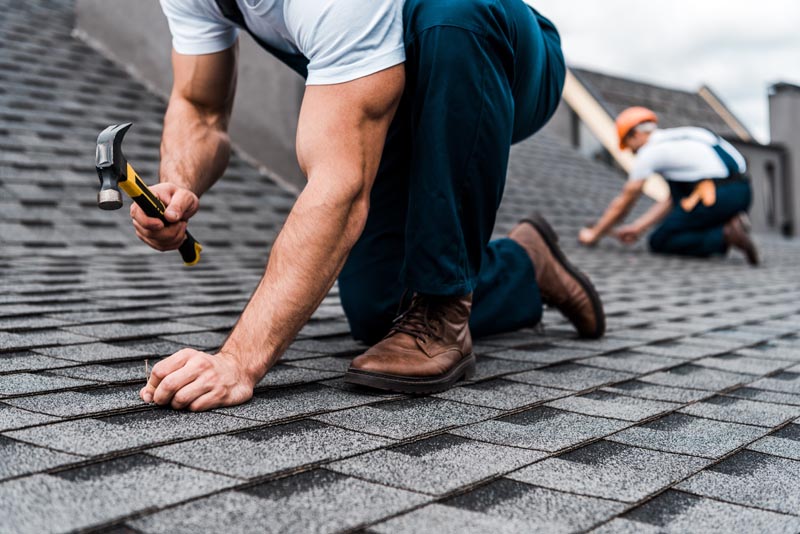
Sustainability in Roofing: Green Tools for Baltimore’s Future
Sustainability in Roofing: Green Tools for Baltimore’s Future
Introduction
As climate change continues to pose a growing threat to our planet, it is becoming increasingly vital for every industry to adopt sustainable practices. The roofing industry is no exception, and in the bustling city of Baltimore, where urban development is booming, eco-friendly roofing solutions are crucial for a sustainable future. By embracing green tools and techniques, roofers in Baltimore can play a significant role in reducing the city’s carbon footprint and promoting a healthier environment for its residents.
Embracing Eco-Friendly Roofing in Baltimore
Baltimore, the largest city in Maryland, faces numerous environmental challenges, including rising temperatures, air pollution, and stormwater runoff. These issues make it imperative for the city’s buildings, including residential homes and commercial structures, to adopt eco-friendly roofing practices. By choosing sustainable roofing materials, homeowners and business owners can contribute to energy efficiency, reduced greenhouse gas emissions, and overall environmental well-being.
One of the primary ways to embrace eco-friendly roofing is through the installation of green roofs. Green roofs consist of a layer of vegetation on top of a waterproof membrane, providing numerous benefits. They reduce the heat island effect and energy consumption by insulating buildings, improve stormwater management by minimizing runoff, absorb carbon dioxide, and release oxygen, effectively reducing air pollution. Additionally, green roofs contribute to the beauty of the urban landscape, providing a habitat for wildlife in densely populated areas.
Another eco-friendly roofing solution gaining popularity in Baltimore is the use of cool roofs. These roofs are designed to reflect more sunlight and absorb less heat than traditional dark-colored roofs. By utilizing reflective roofing materials, cool roofs decrease the demand for air conditioning, reduce energy consumption, and mitigate the urban heat island effect. Cool roofs also extend the lifespan of the underlying roof structure by maintaining lower temperatures, thus reducing maintenance costs for property owners.
Solar panels integrated into roofing systems offer an excellent opportunity for sustainable energy generation in Baltimore. By harnessing the power of the sun, solar roofs can generate electricity for residential and commercial buildings, reducing reliance on fossil fuels. Through net metering, excess energy produced by the solar panels can be fed back into the grid, offsetting the overall energy use of the building. This clean and renewable energy source not only helps combat climate change but also offers potential cost savings for property owners over time.
Rainwater harvesting is another sustainable technique that roofing professionals in Baltimore can employ to enhance eco-friendliness. By installing rainwater collection systems, rooftops can capture and store rainwater for later use in irrigation and non-potable water needs. This practice reduces strain on municipal water supplies, promotes water conservation, and minimizes stormwater runoff, which can help prevent flooding and contamination of water bodies. It is a simple yet effective way to utilize a valuable resource and contribute to sustainable water management efforts.
Tools and Techniques for Sustainable Roofing in Baltimore
When implementing sustainable roofing practices in Baltimore, roofers have a variety of tools and techniques at their disposal. From using eco-friendly materials to adopting energy-efficient installation methods, every aspect of the roofing process can be optimized for sustainability.
For starters, choosing environmentally friendly roofing materials is crucial. Opting for materials such as recycled shingles, clay or slate tiles, or metal roofing made from recycled materials can significantly reduce the carbon footprint and resource consumption associated with roof installations. These materials are often more durable and long-lasting, minimizing the need for frequent replacements and reducing waste.
Proper insulation is another key factor in sustainable roofing. By ensuring that roofs are well-insulated, property owners can enhance energy efficiency, reduce heat loss in winter, and prevent excessive heat gain in summer. This not only lowers energy consumption but also enhances the overall comfort of buildings. Eco-friendly insulation materials made from recycled or renewable sources, such as cellulose or wool insulation, further contribute to sustainability.
In addition to material choices, sustainable roofing installation techniques can make a significant difference in reducing environmental impact. Roofers can adopt efficient waste management practices, ensuring that recyclable materials are properly sorted and disposed of. They can also prioritize proper ventilation systems to prevent condensation and moisture issues, which can lead to mold growth and structural damage.
To further promote sustainable roofing practices, it is essential for roofing professionals in Baltimore to stay updated on the latest advancements in eco-friendly roofing techniques. Attending industry conferences, workshops, and certification programs focused on sustainable roofing will provide valuable knowledge and enable the adoption of best practices.
In conclusion, sustainability in roofing is not merely a trend but a necessity for the future of Baltimore and our planet as a whole. By embracing eco-friendly roofing practices, such as green roofs, cool roofs, solar panels, and rainwater harvesting, the roofing industry in Baltimore can contribute to a greener, more resilient city. By selecting sustainable materials, optimizing insulation, implementing efficient installation techniques, and staying informed about sustainable innovations, roofers can ensure a brighter, more sustainable future for Baltimore’s residents and generations to come.